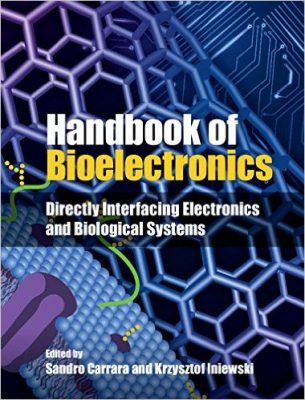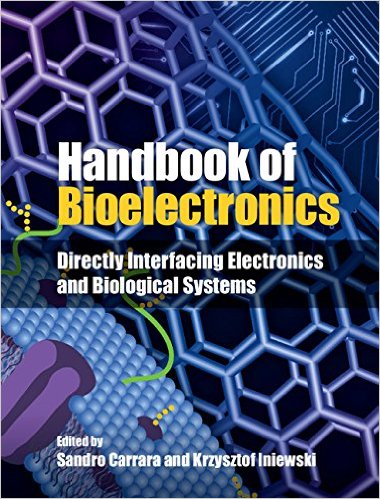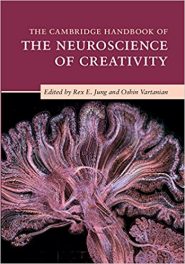 Editors: Sandro Carrara and Krysztof Iniewski
Editors: Sandro Carrara and Krysztof Iniewski
Publisher: Cambridge University Press – 577 pages
Book Review by: Nano Khilnani
The simplest meaning of bioelectronics is the relationship between biology and electronics. It is a means of using electronics to measure various data relating to a living body – human or animal. The applications of electronics in biology, particularly in human anatomy and physiology so are numerous and varied, as you will learn just by reading the outline below of the book’s contents, much less than this book itself, are mind-boggling.
This book was published in 2015, and it reveals interesting information discovered until then. We provide you below an outline of the titles of the 44 chapters of this book to inform you of the tremendous possibilities of improving your health just by learning and knowing your own body’s metrics. You will learn of these possibilities in chapter 9 – CNT and Proteins for Bioelectronics in Personalized Medicine, written by Andrea Cavallini, Cristina Boero, Giovanni De Micheli, and Sandro Carrara.
This chapter about carbon nanotubes (CNTs for short) is an interesting one. Here is a passage from the chapter that describes the capability of carbon nanotechnology:
“The use of CNTS has recently gained momentum in the development of electrochemical biosensors, since their utilization can create devices with enhanced sensitivity and detection limit capable of detecting compounds in concentrations comparable to those found in the human body” (Italicization ours).
What is one practical use of CNTS, for example? They can detect the presence of drugs and metabolites relevant in personalized medicine: P450 biosensors for therapeutic drug monitoring.
In an Overview of this chapter, the authors write: “Carbon is a very interesting element. since it can assume several stable molecular structures. Any molecule composed entirely of carbon is called a fullerene. It can assume the form of hollow spheres, needles or ellipsoids 92). Graphene is an allotrope of carbon, where atoms are arranged in sp2 bonding state. With hexagonal honeycomb lattices arranged in a seamless structure.“ See Figure 9.1 on page 111.
One hundred and fifteen specialists in various aspects of bioelectronics from 20 countries – Australia, Canada, China, France, Germany, Hong Kong, India, Ireland, Israel, Italy, Japan, Portugal, Scotland, Singapore, South Korea, Spain, Switzerland, Taiwan, the United Kingdom and the United States – contributed content to this book by authoring or coauthoring the 44 chapters of this book that we detail below:
- What is Bioelectronics
- Part I – Electronic components
- Molecular components for electronics
- Nanogaps and biomolecules
- Organic thin-film transistors for biological applications
- Protein-based transistors
- Single-molecular bioelectronics
- Nano-scale biomemory device composed of recombinant protein variants
- Part II – Biosensors
- Introduction to biosensors
- CNT and proteins for bioelectronics in personalized medicine
- CMOS nanowire biosensing systems
- Cell-array biosensors
- System-on-a-chip pulse radar for contactless motion sensing in human-machine smart interfaces
- MagCMOS
- Metamorphic neural interfaces with insects for remote controlled biobots
- Part III – Fuel Cells
- Biofuel cells
- Advances and applications in biofuel cells
- Switchable electrodes and biofuel cells logically controlled by chemical and biochemical signals
- Part IV – Biomimetic Systems
- Bomimetic Systems
- Epidermal electronics – flexible electronics for biomedical applications
- Bioelectronics brain using memristive polymer statistical systems
- Electronic modeling of synthetic genetic networks
- Part V – Bionics
- Introduction to bionics
- Bioelectronic interfaces for artificially driven human movements
- The Bionic eye: a review of multielectrode arrays
- CMOS technologies for retinal prosthesis
- Photovoltaic retinal prosthesis for restoring sight to the blind
- Part VI – Brain Interfaces
- Introduction to brain-machine interfaces
- ECG technology for the brain-machine interface
- Reducing the implant footprint: low-area neural recording
- Electrical stimulation
- Biological channel modeling and implantable UWB antenna design for neural recording systems
- Intracranial epilepsy monitoring using wireless neural recording systems
- Low-power building blocks for neural recording systems
- CMOS circuits for intracellular brain-machine interfaces
- Part VII – Lab-on-a-chip
- Lab-on-a-chip
- CMOS spectrally multiplexed FRET contact imaging microsystem for DNA analysis
- CMOS electrochemical biosensors: instrumentation and integration
- Adaptive and reconfiguration-based error recovery in cyberphysical biochips
- CMOS-based biomolecular sensor system-on-chip
- Part VIII – Future Perspectives
- Future perspectives in bioelectronics
- Real time activity energy expenditure estimation for embedded ambulatory systems using Sensium technologies
- Electronic systems for health management
- Linking the cyber and biological worlds: the Ensemble is the Function
- Conclusion: Personal electronics and distributed theranostics
This is a highly useful book, with lots of figures that make it understandable. Since this book was published five years ago in 2015, be sure to read the last part of this book to learn about the exciting, upcoming, and future capabilities of bioelectronics for us humans in the future, and look for the next edition when it becomes available.
Editors:
Sandro Carrara is a faculty member (MER) at EPFL in Lausanne, Switzerland. He is former Professor of Optical Biosensors in the Department of Bioelectronics in the Department of Electrical Engineering and Biophysics at the University of Genoa in Italy. He is a Founder and Editor-in-Chief of the journal BioNanoScience, Topical Editor of the IEEE Sensors Journal and Associate Editor of the IEEE Transactions on Biomedical Circuits and Sensors.
Krysztof Iniewski is Research and Development at Redlen Technologies Inc. a start-up company in Vancouver, Canada. He is an Executive Director of CMOS Emerging Technologies, Inc. In his career, he has held numerous faculty and management positions at the University of Toronto, the University of Alberta, Simon Fraser University, and PMC-Sierra, Inc.







